Throughout every planning phase for the San Juan-Chama Drinking Water Project, the Albuquerque Bernalillo County Water Utility Authority has practiced extraordinary environmental stewardship as well as meeting all regulatory requirements.
We have:
Preserved the Silvery Minnow
- Donated tens of thousands of acre-feet of San Juan-Chama water to keep the river wet for the minnow.
- Provided funding and physical facilities at the Albuquerque BioPark for captive breeding of the minnow.
- Financed studies to determine why minnow population has declined and what it needs to survive.
Habitat Restoration
- Worked to remove non-native tree species including Salt Cedar & Russian Olive.
- Participated in overbank protection measures.
- Provided equipment for removal of non-native plant and tree species
- Completing compliance and design steps for approximately 160 acres of habitat restoration near Paseo del Norte, including aquatic and riparian habitats.
- Have restored and now monitoring areas impacted by construction for the project at Campbell Road pipeline crossing and the diversion dam, approximately 20 acres.
- ABCWUA selected to receive a federal grant for habitat restoration, approximately 10 acres, near La Orilla for the SWWF.
Environmental Monitoring
- Now monitoring and reporting the results of Rio Grande silvery minnow egg monitoring during May of each year.
- Monitoring adult fish in and near the fish passage.
- Supporting a study to evaluate fish movements within the fish passage using electronic tag monitoring.
Operations
- Reporting annual operations of the diversion to the US Fish and Wildlife Service, US Bureau of Reclamation and New Mexico Interstate Stream Commission.
- Developed processes for and implemented, as necessary, curtailment of diversion dam operations as environmental conditions indicate.
- Assigned staff serving on awareness and technical workgroup to address potential zebra and other mussel potential introduction s in the Rio Grande.
Middle Rio Grande Endangered Species Collaborative Program
- Assignment and participation of staff to support technical workgroups, including habitat restoration, general science of the endangered species, water management model development and other areas of this program.
- Assignment and participation of staff to the program for executive committees.
Hydrology Studies
- Provided and continue to provide major funding for U.S. Geological Survey groundwater studies
- Provided major funding for the Bureau of Reclamation study of the river and groundwater interaction
Conservation
- Achieved 30 percent reduction in overall water use
- Increased conservation goal to 40 percent
- Actively participating in Conservation Alliance
- Aggressively enforcing water waste prohibition
Protecting Water Quality
- Implementing Groundwater Protection Policy
- Managing national award-winning industrial sewage pre-treatment program
Educating the Public
- Spending millions of dollars on conservation education and promotion
- Directing a full-time staff person to provide water education to students in primary grades
- Administering comprehensive water-quality protection education and outreach programs
Regional Resources Management
- Working with major regional entities to implement regional water plan focused on sustainability
- Developed drought-management plan to protect the aquifer during periods of excess pumping
Meeting Environmental Standards
The National Environmental Protection Act (NEPA) requires environmental studies on projects such as the San Juan-Chama Drinking Water Project. The final Environmental Impact Study (EIS) was completed in April, 2004. This document addresses the environmental resources identified as important to the public, and those required to be considered by other laws and regulations.
 Principal Determinations of the EIS:
Principal Determinations of the EIS:
- No bald eagle or Southwestern willow flycatcher would be lost
- Individual Rio Grande Silvery Minnow larvae and eggs may be impinged through fish screens
- No air emissions exceed EPA standards
- No substantive change in historic reservoir levels
- No effect on the water table in the project area
- No disturbance of human remains
- Subsidence risk will actually decrease as heavy aquifer pumping is averted
- No hazardous materials or threats to health and human safety
- No negative recreational impacts
- Temporary modification of hiking trails
- Only 1.0 acres of riparian (river bank) habitat will be lost and/or modified
- Only 1.0 acres of silvery minnow habitat would be lost or degraded
- No rare or sensitive upland plant species will be affected
- No high-use waterfowl will be affected
- No birds protected under the Migratory Bird Treaty Act will be affected

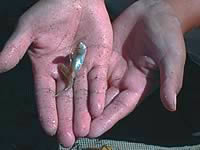
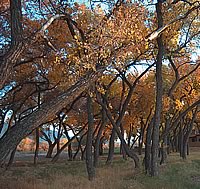
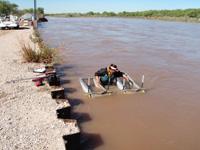
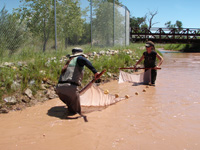
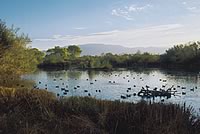
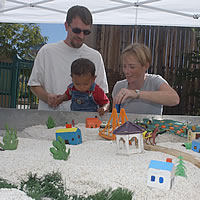
 Principal Determinations of the EIS:
Principal Determinations of the EIS: